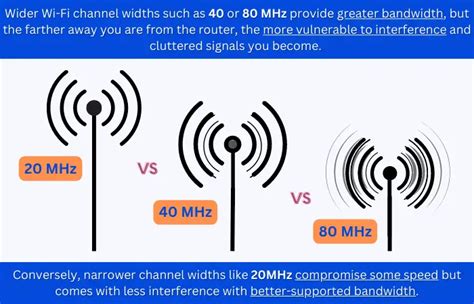5g 20 40 80 mhz - 5ghz wifi : 2024-11-02 5g 20 40 80 mhzNever ever ever ever use 40 MHz on 2.4 GHz. There just aren't enough channels in 2.4 to have a non-overlapping 40 MHz channel. . Set 20/40 to 20 only at least for the 2.4ghz radio/band. For 5ghz 20/40 or 20/40/80 is . 5g 20 40 80 mhzOur portfolio includes NOVOMATIC originals and many other games. It’s not just slots that await you here – other types of betting games are also available! Rest assured that your safety and enjoyment is of the greatest importance to us. Log in .
Līdzeklis kanalizācijas cauruļu tīrīšanai Felder Fermitex, 1 kg . Reģistrējoties kursi.lv -12%. 12 € 13,97. Gab. Pievienot grozam. Salīdzināt. Bioaktivātors Sotralentz BIO7 Graisses, tauku atdalītāja kopšanai . kursi.lv -12%. 8 € 9,89. gab. Pievienot grozam-23 % Salīdzināt. Bioaktivātors Sotralentz BIO7 Drainage .
5g 20 40 80 mhz The same RU allocation process applies to 40 and 80 MHz channel widths as well. The following table shows the maximum number of clients that could simultaneously communicate (maximum OFDMA . In the quest for the fastest and most reliable Wi-Fi, understanding bandwidth settings – specifically, the difference between 20, 40, 80, or 160 MHz channels “widths” – is key. These settings can significantly impact your Wi-Fi performance, especially in different environment densities.Never ever ever ever use 40 MHz on 2.4 GHz. There just aren't enough channels in 2.4 to have a non-overlapping 40 MHz channel. . Set 20/40 to 20 only at least for the 2.4ghz radio/band. For 5ghz 20/40 or 20/40/80 is .60: [10, 15, 20, 25, 30, 40, 50] The UE channel bandwidth supports a single NR RF carrier in the uplink or downlink at the UE. From a BS perspective, different UE channel bandwidths may be supported within the same spectrum for transmitting to and receiving from UEs connected to the BS.

We would like to show you a description here but the site won’t allow us.5ghz wifiFrequency bands for 5G New Radio (5G NR), which is the air interface or radio access technology of the 5G mobile networks, are separated into two different frequency ranges. First there is Frequency Range 1 (FR1), [1] which includes sub-6 GHz frequency bands, some of which are traditionally used by previous standards, but has been extended to .
5g 20 40 80 mhz 의무적으로 20/40/80 MHz, 선택적으로 160 MHz 대역폭 지원. 기존 802.11a, b, g 규격에서는 20 MHz(실제로 고려해보면 16.6 MHz 정도?)의 대역폭을 사용할 수 있었고, Wi-Fi 4부터는 40 MHz 채널이 도입되기 시작했다. Wi-Fi 5 규격부터는 최대 160 MHz의 극도로 넓은 대역폭을 활용할 .Channels 149-161 looks so clean, I'd attempt 80 MHz width on it. DFS Channels 132-144 look unused, but might have problems if you live near radar or have clients that are incompatible with DFS. So I'd just use the "common" upper channels 149-161 at either 40 or 80 width, depending on whether I wanted stability or maximum throughput.The standard width of a channel is 20 MHz. Bonding multiple 20 MHz channels together (to achieve 40/80/160 MHz) can increase throughput. But it’s only worth it if it doesn’t increase interference. After much testing, we recommend letting your router decide by setting the channel width to “Auto.”It seems every where I look people recommend NOT to use 80 MHz for the 5 GHz band and to stick with either 20 or 40 MHz. Now, from what I understand this is because using a higher (wider) channel width means that the access point will cause more interference across another channels (please correct me if I'm wrong).
Matilde Stadager – March 21, 2024. If your Louis Vuitton items are damaged and need a repair, understanding your repair options is crucial. This article outlines clear steps for the Louis Vuitton repair process, from in-store visits to mail-in services, and what to expect in terms of cost and time.
5g 20 40 80 mhz